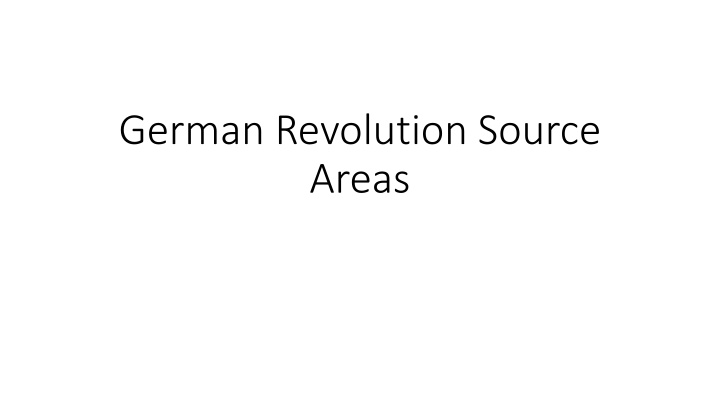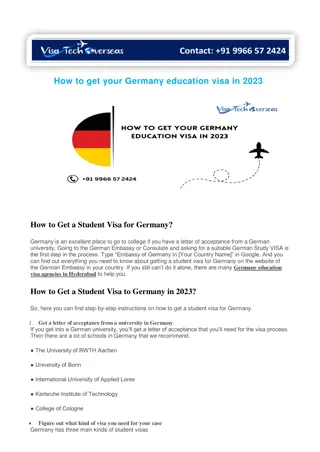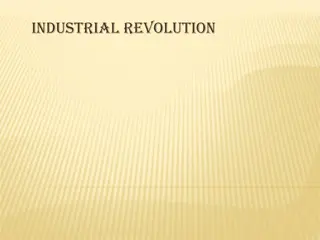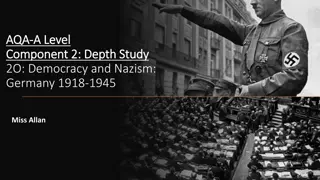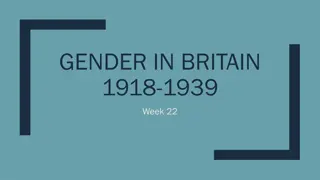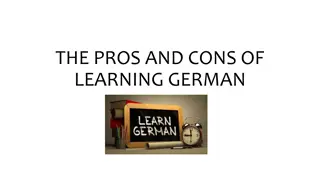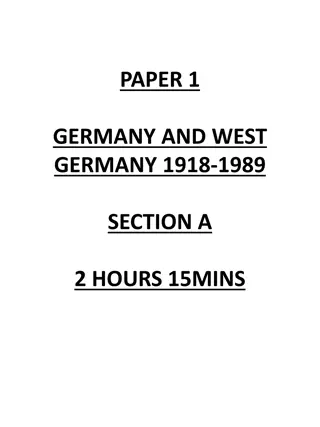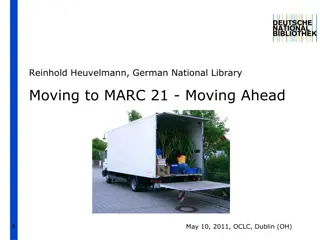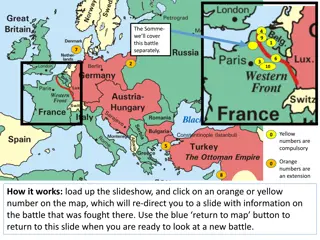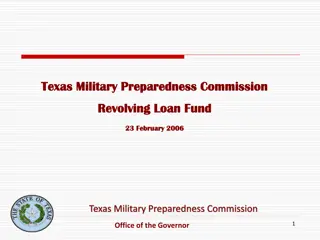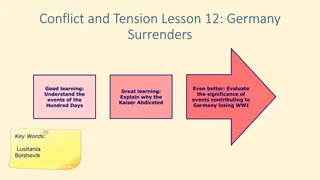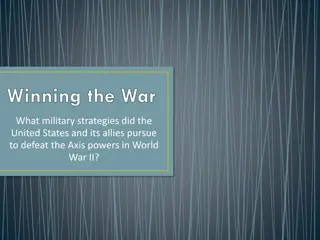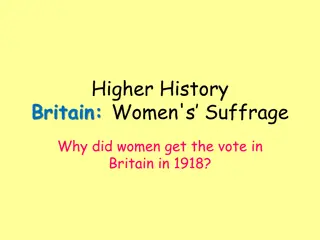German Revolution of 1918: Source Areas and Military Defeat
The German Revolution of 1918 saw a complex interplay of events, from military defeat to political maneuvers. The myth of the army being stabbed in the back, Ludendorff's attempts to shift blame, and the revolution from above orchestrated by elites all shaped this pivotal period in German history. Despite efforts to maintain power and limit the scope of real revolution, the country underwent significant changes that set the stage for the future.
Download Presentation

Please find below an Image/Link to download the presentation.
The content on the website is provided AS IS for your information and personal use only. It may not be sold, licensed, or shared on other websites without obtaining consent from the author.If you encounter any issues during the download, it is possible that the publisher has removed the file from their server.
You are allowed to download the files provided on this website for personal or commercial use, subject to the condition that they are used lawfully. All files are the property of their respective owners.
The content on the website is provided AS IS for your information and personal use only. It may not be sold, licensed, or shared on other websites without obtaining consent from the author.
E N D
Presentation Transcript
German Revolution Source Areas
Source Areas Military defeat of 1918: myth and reality Nature and limitation of the revolution: revolution from above ; revolution from below Proclamation of the Republic and the Ebert-Groener Pact ZAG: revolutionary government, industrialists and trade unions Spartacists Revolt and its suppression Preparation and adoption of a new Constitution
Military defeat of 1918: myth and reality Myth was the German army were stabbed in the back by civilian politicians back in Germany. Luddendorff said let them eat the broth that they have prepared . Generals had been in charge in silent dictatorship [kitchen] during war. Burgfrieden peace in the fortress. Reality was Ludendorff wanted to shift the blame onto the Reichstag majority for losing the war if they were in power when the war ended then they would take responsibility for its loss. He also wanted To prevent the army from being totally defeated. To prevent the German army from taking part in a possible revolution in Germany. To prevent a Russian style communist revolution in Germany. He thought a democracy would look more presentable to Wilson and the Allies and this Germany might win better peace terms.
Military defeat of 1918: myth and reality Ludendorff, one of the generals operating the military dictatorship, took a remarkable gamble on September 29th1918. As military defeat seemed inevitable, he ordered a revolution from above. This meant that he persuaded the Kaiser to hand over power to a civilian government who had the backing of the Reichstag. Prince Max of Baden takes over but his October Reforms are seen as too limited and the revolution from below breaks out. Lee evolution accelerated by necessity
Revolution from Above Nature and limitation An attempt by elites to hold onto power in Germany. If this attempt works then there is no real revolution. Elites driven by trying to shift blame for losing WW1, engineering a more lenient treaty and holding onto power these motives are not revolutionary. Stab in back. Ludendorff eat the broth they have prepared Initial government under Prince max of Baden tried to run Germany in October 1918 but their October reforms were too limited.
Revolution from above Nature and limitation Partly works this allows old Germany to remain in power and limits real revolution. Elites stayed in control of the key levers of power- judges, civil servants, army, police, industrialists and junkers. Elites have huge influence on Ebert the Ebert-Groener pact and the harsh treatment of the Spartacist revolt prove this. Carr The structure of Germany was hardly affected by the revolution and the spirit of Imperial German lived on in the unreformed civil service, the judiciary and the army
Revolution from below Nature and limitation On the 28thof October 1918 the sailors at Kiel refused to put to sea and mutinied. This is seen as the trigger of the revolution from below. at this critical point matters began to run out of control. Conan Fischer. The protests spread across the whole of Germany with Soviets being set up and socialist republics in Bavaria and Saxony. Revolutionary situation in 1918 chaos in germany- riots, strikes and mutinies in Nov/Dec 1918 Communist and democratic republics were declared in Berlin on the 10thof November.
Historians Limitations if there was a revolution it did not revolutionise Lee achievements undoubtedly limited Carr aborted revolution Feuchtwanger
Proclamation of the Republic and the Ebert- Groener Pact On the 9thof November 1918 2 Republics were declared from separate balconies of the Reichstag one a democratic republic declared by Scheidemann of the SDP and the other a communist republic declared by Liebknecht of the KPD. Ebert was angry at Scheidemann a she didn t want democracy in charge as the war was lost but he accepted power when Prince Max handed it over to him.
Proclamation of the Republic and the Ebert- Groener Pact On the 10thNovember 1918, the day after the Kaiser abdicated, the head of the arms General Groener (who had replaced Ludendorff as commander in chief) telephoned Ebert in order to establish an understanding. With the support of the army the new democracy would have legitimacy. In return the government would support the generals control over the army and would oppose any attempt at revolution. The Ebert-Groener pact is an example of Ebert cooperating with the elite. His thinking was influenced by the threat of a communist revolution. There has been a developing historical debate over whether Ebert was justified in his actions. The initial view tended to be that Ebert made a pragmatic, necessary decision. This view emphasises the danger of a Bolshevik style revolution and the need to buttress the new democracy with support from the old guard. Post WWII historians in East Germany (Communist) saw Ebert as a traitor on the side of capitalism. More recent research has suggested that Ebert overestimated the threat of a communist revolt and underestimated the threat from the right
ZAG: revolutionary government, industrialists and trade unions KPD and left of USPD wanted Soviets to take over industry or at least nationalisation. Stinnes [industrialist] and Legien [Trade unionist] met and signed an agreement to prevent this on 15thNovember 1918. the union representatives promised to guarantee orderly production, to end wild cat strikes, to drive back the influence of the councils and to prevent a nationalisation of means of production.
ZAG: revolutionary government, industrialists and trade unions This led to an 8 hour day, gave full legal status to TU s and allowed workers committees established. Left wing politicians and historians have criticised it as helping the survival of capitalism. Lancaster (2001) Another missed opportunity because it allowed free market capitalism which had existed under the Kaiser to survive his abdication . Other historians have seen these agreements as revolutionary and different. Workers now had a seat at the same table as the bosses.
Preparation and adoption of a new Constitution Constitution was designed as a liberal and democratic, written by Hugo Preuss, inspired by US constitution. + Economy has to be organised on principles of justice [vague] + Civil rights/freedoms guaranteed vote, speech, religion, unions. + guaranteed welfare state pensions/benefits. - President too much power ersatz Emperor Kolb. - Article 48 Placed too much power in hands of President abused in 1930 s. Worked well in 1923. - Prussia kept too big against advice of Preuss.
Preparation and adoption of a new Constitution - Ebert President 1919-1925 but never elected!!! H Lee constitution was fundamentally flawed H Klaus Fischer a hodge-podge [mixed up/confused] Peukert a brave experiment that could have worked
